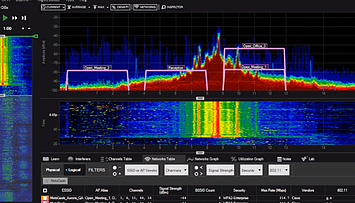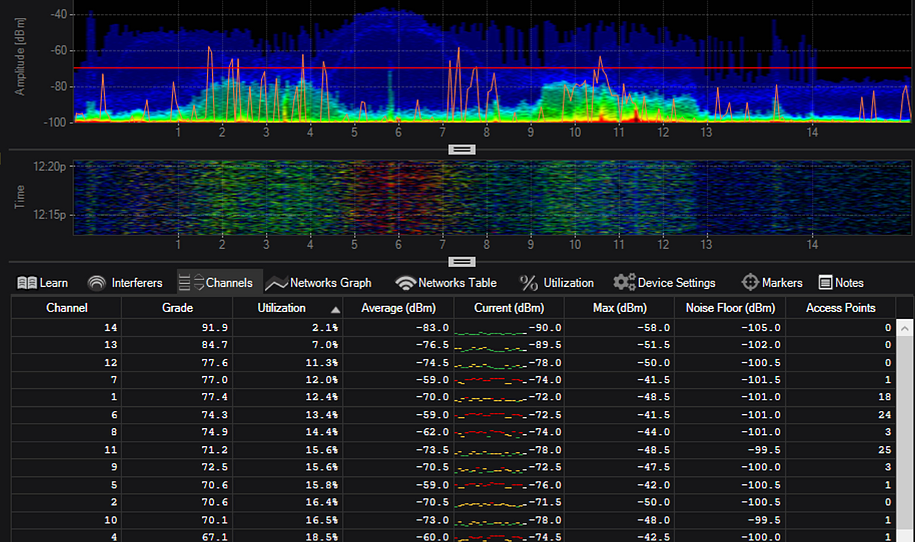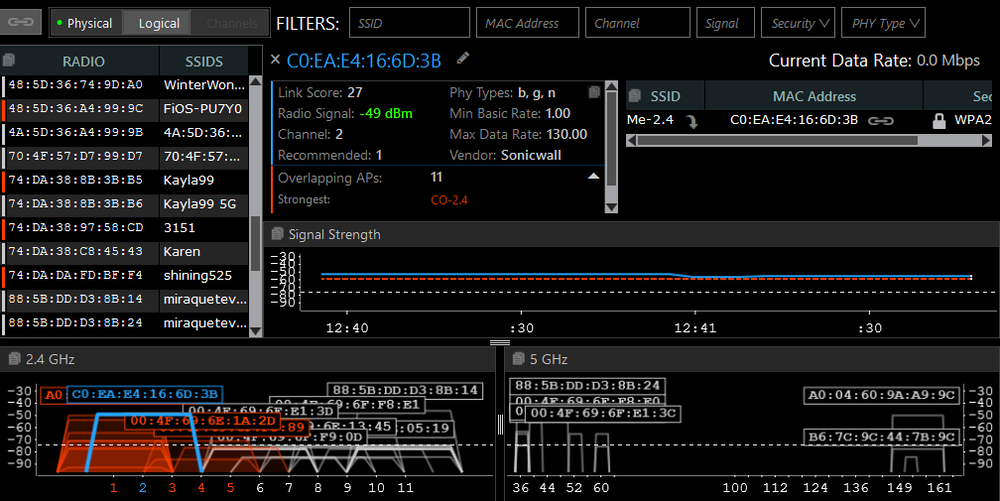In the WiFi world, when we refer to wireless spectrum analysis, we refer to the detailed examination of the 802.11 radio frequencies. Most WiFi networks in productions environments use the 2.4 GHz and 5 GHz bands. With the introduction of 802.11 ax standards, also known as WiFi 6, the 6 GHz radio band is also available for utilization. Do you need to perform WiFi spectrum analysis for better network performance? The answer is no, performing a spectrum analysis will not improve the WiFi network performance. However, it will provide helpful information for WiFi network planning, troubleshooting, and administration. A WiFi spectrum analysis is analogous to an MRI, an MRI creates detailed images of the body structure. In the same way, a WiFi spectrum analysis also creates a detailed view of the WiFi spectrum, and the information is used to understand the WiFi performance and diagnose connection issues.
As business WiFi installation services experts, we perform a spectrum analysis for every Wireless Installation Service or WiFi troubleshooting service. WiFi radio waves are saturated with WiFi and non-WiFi devices utilizing the same radio signal channels for communication, sometimes the WiFi traffic is so much that Access Points use non-standard, overlapping channels for communication. The interference caused by machinery and other devices bleeding EMI into the WiFi spectrum adds to the already existing WiFi traffic.
Wireless Spectrum Analysis is one of the main tasks during the wireless assessment. It also becomes a wireless management and troubleshooting tool for administrators to perform regularly after complete WiFi implementation.
Wireless Spectrum Analisys can you with:
- Identifying Wireless Interference.
WiFi Radio frequencies are open to any device that needs to use them, and the devices using the radio waves may be under your control or not. It’s common to find all kinds of devices utilizing the radio bands, some of them are WiFi-enabled devices (those that comply with the 802.11 standards), and others do not. The saturation of the wireless spectrum manifests as low throughput and unreliable network performance, even when the connection between the clients and the access point seems to be strong. Performing a spectrum analysis allows you to identify if WiFi or non WiFi devices are radio interference in your network.

2. Locating the source of the interference.
Identifying if radio interference affects your WiFi network is one thing; finding the source of the interference is another. When we perform business WiFi installation services, we include the spectrum analysis as part of the service to evaluate the spectrum. If interference is found, we try to identify the root cause of the problem to free the limited channel resources or build the WiFi network around if the issue can’t be corrected.
3. Identify non-WiFi (802.11) radio activity.
This is one of my favorite reasons to perform spectrum analysis, and it’s usually overlooked during the WiFi design and troubleshooting process. This is relevant in factories, warehouses, and distribution centers where many types of machinery and malfunctioning electrical equipment can bleed EMI into the WiFi network. A proper spectrum analysis will show you if non-WiFi-enabled devices are saturating the WiFi spectrum with noise.

4. Determine Channel Utilization.
Whether your deployment is for a single or dual-band configuration, you want to see the state of the WiFi channels utilization and noise floor for your environment.

As you can see, a WiFi spectrum Analysis is essential in the planning, deployment, and support of WiFi networks. Having a clear picture of the radio bands, channel utilization, and overall wireless interference helps you design a reliable WiFi solution and focus your time and effort in the right places.
We’re JDTech, a wireless installation company in New Jersey providing highly efficient, resilient, and cost-effective WiFi and Cyber Security Solutions. We help businesses and organizations in the design, planning, implementation, and support of WiFi solutions.
Contact us 888-580-4450 | www.jdtechsolutions.net | info@jdtechsolutions.net for more information about our wireless services and solutions.


